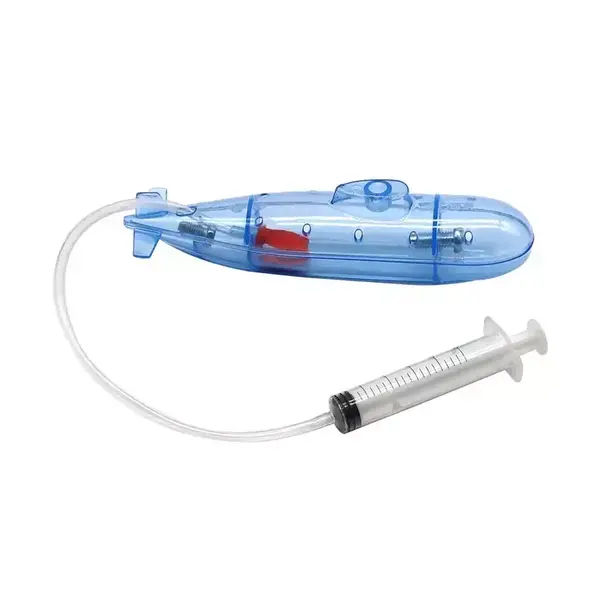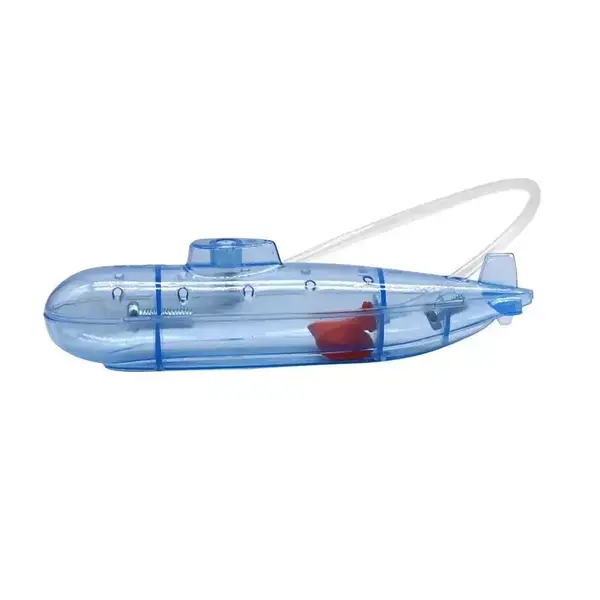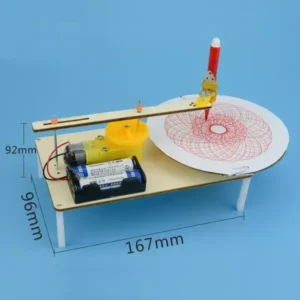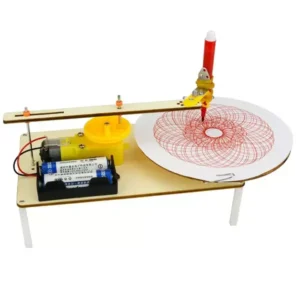Product Details
Reviews
Product Details
Objective:
Demonstrate a model of a Submarine to explore underwater exploration, buoyancy, and the principles of submarines in aquatic environments.
Materials included:
Syringe
Submarine Plastic
Materials not included in the kit:
Procedure and assembly steps:
Procedure included in the kit manual . This is not a ready made product. Student needs to follow the steps to assemble the model…
Description:
Submarine Model: A Simple Representation
A submarine is a complex and fascinating underwater vessel used for various purposes, including exploration, research, and defense. Here, we’ll create a simplified model to help illustrate its key components and how it operates:
Components of the Submarine Model:
- Hull:
- The hull is the outer shell of the submarine, typically made of steel or other materials designed to withstand water pressure. It provides buoyancy and protection from the surrounding water.
- Ballast Tanks:
- Submarines have ballast tanks that can be filled with water or emptied of water to control their buoyancy. Filling the tanks makes the submarine heavier, causing it to descend, while emptying them makes it lighter, allowing it to rise.
- Propulsion System:
- Submarines are equipped with propulsion systems, often in the form of electric or nuclear-powered engines. These engines drive propellers that provide forward and backward motion.
- Periscopes:
- Periscopes are optical instruments that allow the crew to observe the surface while the submarine remains submerged. They can be rotated and extended above the waterline.
- Navigation and Control:
- Inside the submarine, there are control panels and instruments for navigation, depth control, and monitoring various systems. The crew uses these to operate the submarine safely.
- Submersion:
- To submerge, the submarine fills its ballast tanks with water. This increases its weight, causing it to descend beneath the surface.
- Navigation:
- While submerged, the submarine is controlled by the crew using the navigation and control systems. They can adjust depth, direction, and speed to navigate underwater.
- Propulsion:
- The propulsion system generates the necessary thrust for the submarine to move forward or backward. This is achieved through the rotation of propellers.
- Surfacing:
- To surface, the submarine expels water from its ballast tanks, making it lighter. This buoyancy change causes the submarine to rise to the surface.
- Periscope Use:
- The periscopes are used to observe the surface without exposing the entire submarine. They can be rotated and extended to provide a view of the surroundings.
- Safety Measures:
- Submarines are equipped with safety features and emergency procedures to ensure the well-being of the crew while underwater.
Learning outcome:
Have a better understanding of a Submarine to explore underwater exploration, buoyancy, and the principles of submarines in aquatic environments using the model built by the student in this project
Section or subject:
Physics
Grades:
3+
Reviews
Be the first to review “Submarine model” Cancel reply
















Reviews
There are no reviews yet.